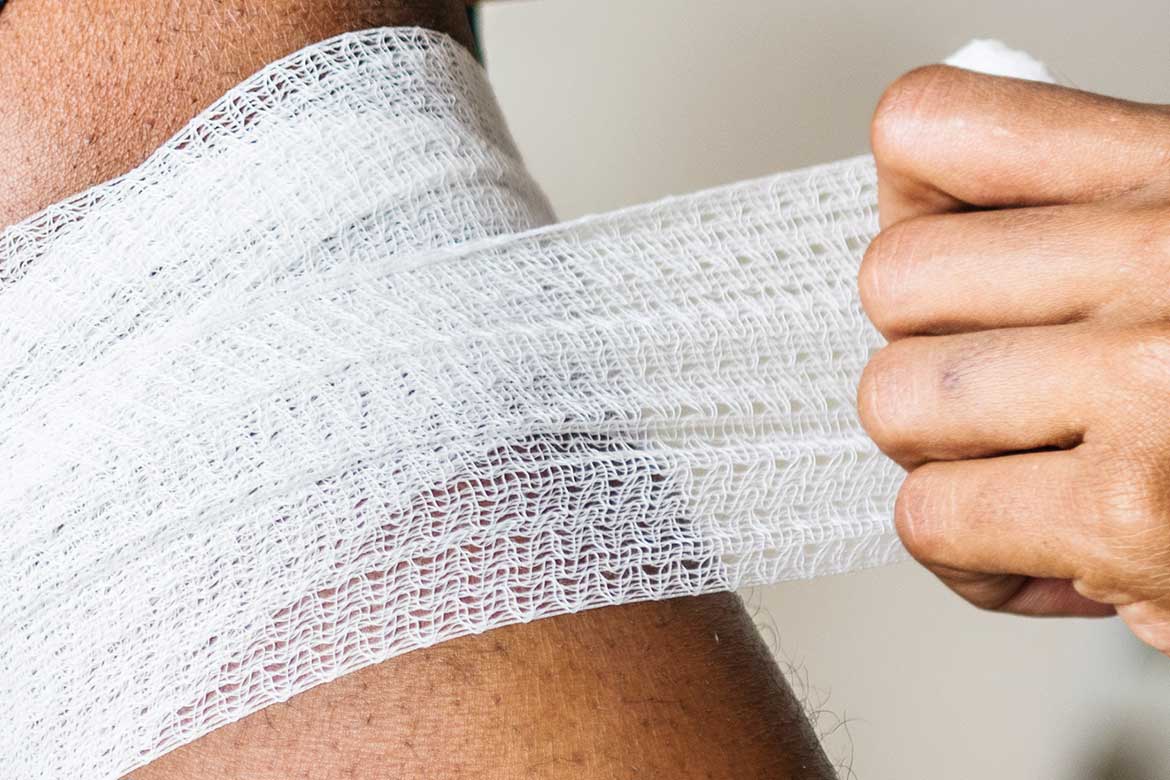19th October, 2023
The First Aid Appointed Person Role And Responsibilities
The first aid appointed person isn't a first aider. But they still have an important role in your first aid cover at work. So when can you use the appointed person? First, you need to understand what an appointed person is, and their responsibilities.

Employers have responsibilities when it comes to the health and safety of their team. Every business needs to make sure they have first aid arrangements in place. These include:
- Completing a first aid needs assessment
- Having an appointed person to take charge of first-aid arrangements, or appropriate numbers of trained first-aiders
- Ensuring there are adequate facilities including a suitably stocked first-aid box
- Providing employees with information about first-aid arrangements.
But before you decide if you need an appointed person or a first aider, you need to understand what an appointed person is, and their responsibilities.
What is a first aid appointed person?
The first aid appointed person isn't a first aider. They don't have to have first aid training, and they can't give first aid. But they can still have an important role to play when it comes to your first aid cover at work.
A first aid appointed person is someone you can put in charge of first aid arrangements. That doesn't mean providing first aid (like first aider), but it does mean looking after first aid equipment and facilities.
They would also be responsible for calling the emergency services if needed.
You can have more than one appointed person. But if you do have more than one, make sure this doesn't lead to confusion about who should take charge in an emergency. For example, an appointed person in charge of different areas or at different times.
An appointed person must always be available whenever people are at work.
Remember, they are not a trained first aider. If someone is having a heart attack or a stroke, they might not know what to do. They haven't had the training that a first aider would have.
But they can provide reassurance and get help from the emergency services.

And sure, anyone in your business can do the same, you don't need to be an appointed person to call 999. But in an emergency people might panic, or assume that someone else has called for help.
Having an appointed person means you have someone who knows it is their responsibility to take charge.
When do you need an appointed person?
So when can you use an appointed person instead of a first aider? Or as well as a first aider?
Well, an appointed person is the minimum requirement.
In low-risk work, an appointed person can cover up to 25 employees. In high-risk work, only 5.
These numbers are not an exact science. It often depends on the type of work you do, and the number of employees you have.
For more information check out the blog post How Many First Aiders Do I Need? Low Vs High Risk Work.
Before you decide if an appointed person is right for your business, let's look at what they can do. And what they can't.
The role of the first aid appointed person is to take charge of first aid arrangements.
When an employer's first-aid needs assessment indicates that a first-aider is unnecessary, the minimum requirement is to appoint a person to take charge of first-aid arrangements.
To fulfil their role, appointed persons don't need first aid training, and they are not responsible for providing first aid.
But if the first aid appointed person isn't a first aider, how can they take charge of first aid? They might not be able to give first aid (you need a trained first aider for that), but they can take charge of first aid arrangements.
Let's look at what the first aid appointed person is responsible for, and the main tasks of the first aid appointed person.
1. Looking after the first-aid equipment and facilities
An appointed person can look after first aid equipment. They will know where the first aid kit is, should it be required. They might be responsible for regularly checking the first aid kit is stocked up, and any used or out-of-date items replaced.
They might also be tasked with checking first aid facilities are kept clean, and any damaged equipment is repaired or replaced.

2. Taking charge when someone is injured or becomes ill
If you have first aiders, they will usually take responsibility of casualties in the first instance. But if a first aider isn't present, the appointed person will take charge when someone is injured or ill at work.
This might be the case in a low-risk environment with few workers, where a trained first aider isn't required. Or, it might be that the appointed person is providing emergency cover.
They can also provide emergency cover, within their role and competence, where a first-aider is absent due to unforeseen circumstances (annual leave does not count).
Again, this doesn't mean providing first aid. If an appointed person isn't trained in first aid, they can't be expected to make medical assessments or administer first aid.
But they can call for help, fetch first aid equipment and reassure someone that help is on its way.
3. Call the emergency services
Another important task for the first aid appointed person is to call the emergency services if they are needed.

You don't need to be a trained first aider to call the emergency services. And, because they are not trained first aiders, it's especially important that appointed persons can identify when they may need to call 999 or get medical help for someone.
Why would you need an appointed person to do this? Surely anyone can call an ambulance?
Yes, they can. But in many situations, people assume someone else has made the call. And this confusion can delay alerting the emergency services, and slow down help arriving.
After an accident, or in a medical crisis, quick action can mean the difference between life and death.
When an appointed person is working alongside a trained first aider, they may be responsible for contacting the emergency services. This makes sure that 999 calls happen quickly, without taking the first aider away from someone needing their attention.
For example, the first aider can be delivering CPR, while the appointed person calls for help.
4. Keep a record
An appointed person can help maintain injury and illness records as required. This might include your internal accident report forms, as well as making sure the accident book is filled in.
The appointed person might also alert an employer to any RIDDOR reportable incidents that have happened.

5. Provide emergency cover
If your first aid needs assessment shows that you need trained first aiders, then you should make sure you have enough first aiders to cover your workforce.
This assessment should include consideration for shift work, annual leave and the number and spread of your workers.
Appointed persons can provide cover when a first aider is unavailable due to unforeseen circumstances. But, again, they are not trained first aiders. They can't give first aid to a casualty. But they can take charge of first aid arrangements and contact the emergency services.
Unforeseen circumstances shouldn't include annual leave - always make sure you have enough first aid cover for expected absences.
In an emergency, you might need medical help. Who can you turn to? An appointed person can make a huge difference, by knowing what to do and acting quickly.
Get up to speed in the first aid appointed person training course.
This article was written by Emma at HASpod. Emma has over 10 years experience in health and safety and BSc (Hons) Construction Management. She is NEBOSH qualified and Tech IOSH.
Better health and safety...
We are here to help you and your business put safety in everything.
Learn MoreRecent posts like this...

Key Duties Of The Health And Safety At Work Act For Your Business
The Health and Safety at Work etc. Act is an enabling act. It sets out the general health and safety duties that all businesses have to comply with in the UK. It enables further, more specific, health and safety regulations to be passed by law and enforced under it.
Read Post
The Hidden Cost Of Accidents At Work
In the UK, someone is killed at a workplace almost every working day. Hundreds of thousands of workers are injured each year. The cost of these accidents at work isn't always obvious. Many costs are indirect, and the direct costs are just the tip of the iceberg. In this post, we will look at the hidden cost of accidents at work.
Read Post
10 Health & Safety Myths And The Truth Behind Them
Health and safety sometimes gets a bad name. It seems like more and more strict rules are put in place each year. But is this the truth, or are these health and safety myths? In this blog post, we take a look at some health and safety headlines and try to separate fact from fiction.
Read Post